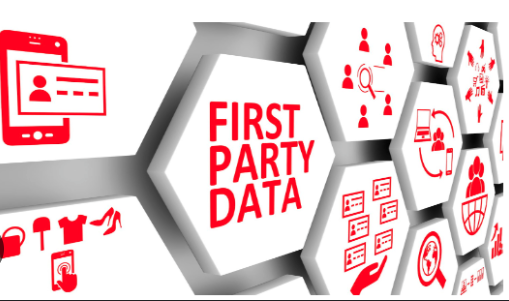Bridging the Gap Between First-Party Data and Predictive Analytics

As third-party cookies continue to fade out and privacy laws like GDPR and CCPA tighten, businesses are turning to first-party data to maintain effective marketing strategies. Unlike third-party sources, 1P data comes directly from your customers, making it more reliable and privacy-compliant.
Predictive analytics takes this a step further by analyzing your 1P data to forecast customer behavior and uncover trends. It’s a game-changer for personalizing experiences and driving growth. In this blog, we’ll dive into what first-party data is, how predictive analytics works, and practical ways to combine them for maximum impact.
What is First-Party Data?
First-party data, often referred to as 1P data, is information your business collects directly from your audience through channels you own. This includes data from your website, mobile app, email campaigns, and CRM. It’s the information customers willingly share with you, like their purchase history, browsing behavior, and responses to email interactions.
The biggest advantage of first-party data is its accuracy and relevance. Since it comes straight from your audience, you have full control over it, and it’s more reliable than data from external sources. It also helps you stay compliant with privacy regulations like GDPR and CCPA because you manage the data collection process directly.
However, it’s not without its challenges. The scope of 1P data can be limited compared to third-party data, which aggregates information from various sources. That means businesses need to be strategic about how they collect and use first-party data to make the most of it. By effectively leveraging 1P data, you can deliver personalized experiences and build stronger customer relationships.
Understanding Predictive Analytics
Predictive analytics uses historical data and machine learning to forecast future trends and customer behaviors. It’s like having a crystal ball for your business—but instead of magic, it relies on data. In marketing, predictive analytics plays a vital role in key areas such as estimating customer lifetime value (CLV), identifying customers at risk of churn, and fine-tuning product recommendations.
The advantages are clear. By relying on predictive analytics, businesses can make data-driven decisions that reduce guesswork and improve efficiency. It also enhances personalization, helping create better customer experiences that drive engagement and loyalty. When combined with 1P data—accurate and privacy-compliant first-party data collected directly from your audience—predictive analytics becomes even more powerful, unlocking actionable insights that shape smarter strategies.
Read also: LED Stage Screen: Illuminating Performances with Cutting-Edge Visual Technology
Why Bridging First-Party Data and Predictive Analytics is Crucial
First-party data is pure gold in today’s privacy-focused world. With stricter regulations like GDPR and CCPA, companies can no longer rely on third-party data for customer insights. First-party data—gathered directly from your customers—builds trust and ensures you stay compliant. But here’s the thing: raw data alone doesn’t get you far. That’s where predictive analytics steps in.
Predictive analytics helps you unlock the real power of your first-party data. It’s all about transforming that raw information into valuable insights you can actually use. Imagine taking customer purchase data and identifying product trends before they even emerge. Or analyzing website interactions to figure out which products a customer is likely to be interested in next. These are just a few ways businesses can stay ahead of the curve.
The synergy between first-party data and predictive analytics also allows for better personalization. For instance, you can tailor your marketing campaigns based on what you know about your audience’s preferences and behavior. This leads to stronger customer relationships, higher engagement rates, and ultimately, more sales.
In a competitive market, leveraging first-party data with predictive analytics isn’t just smart—it’s essential. It’s how you stay relevant while respecting your customers’ privacy.
How to Bridge the Gap Between First-Party Data and Predictive Analytics
1. Data Collection and Organization
Start by centralizing all your first-party data in one place. This includes data from your website, mobile apps, CRM, and any other customer touchpoints. Using a Customer Data Platform (CDP) can help unify and structure this data, making it easier to use later on.
Quality is key here. Make sure your data is clean and consistent. That means removing duplicates, fixing errors, and standardizing formats like dates and phone numbers. If your data is messy, any predictive model you build will be less effective. Think of your data as the foundation – if it’s not solid, everything else falls apart.
2. Choosing the Right Tools and Technologies
When selecting tools for predictive analytics, look for platforms that come with built-in predictive models, like Google Analytics 4 or Tableau. If you need something more advanced, explore machine learning tools that integrate with your existing systems.
It’s important to consider more than just features. Evaluate the cost, scalability, and how easy the tool is to implement. Predictive analytics is powerful, but it won’t deliver results if the tools are too complicated for your team to use effectively.
3. Implementing Predictive Models
Start simple. Focus on use cases like predicting customer churn or identifying which customers are most likely to make a purchase. These are practical and can deliver quick wins.
Use your clean, organized first-party data to train your models. The key is to iterate. Run your model, review the results, and adjust as needed to improve accuracy. Predictive models aren’t a one-and-done thing – it’s an ongoing process of refinement.
4. Ensuring Privacy and Compliance
Data privacy is non-negotiable. Make sure you’re following all relevant data protection laws, like GDPR or CCPA, when collecting and using first-party data.
Implement measures to protect customer data, such as anonymization and consent management. Be transparent with your customers about how their data is being used. People are more likely to trust your brand when they know their data is being used responsibly to improve their experience.
Challenges in Bridging the Gap and How to Overcome Them
1. Data Silos
One of the biggest challenges businesses face is dealing with data silos. This happens when customer data is scattered across different platforms that don’t talk to each other, making it tough to get a complete picture. It’s a major hurdle for companies trying to deliver personalized experiences. To fix this, consider implementing a Customer Data Platform (CDP) or using tools that integrate your various systems. These solutions help centralize data, giving you a unified view of your customers without messy workarounds.
2. Technical Expertise
Not every company has a team of data scientists or machine learning experts in-house. That’s a problem when it comes to building and maintaining predictive models. Instead of struggling with a skills gap, businesses can partner with external analytics providers or invest in training their existing teams. There are also plenty of user-friendly tools out there that don’t require coding knowledge, making it easier for non-technical employees to get involved.
3. Scaling Predictive Models
A predictive model might work fine at the start, but as your business grows and data volumes increase, scaling those models can become a real challenge. On-premise solutions often can’t handle the load, leading to slow performance or inaccurate results. The solution? Move to cloud-based analytics tools. They’re designed to handle growth effortlessly, offering more computing power as needed, without the need to overhaul your infrastructure.
Conclusion
First-party data and predictive analytics are crucial for businesses today. They help make smarter decisions, improve personalization, and drive growth. By bridging the gap between them, companies can stay ahead and offer better experiences. If you’re not using these strategies, you’re missing out. It’s time to focus on gathering quality data and using it to guide your decisions. Start now and make sure you’re ready for the future.

